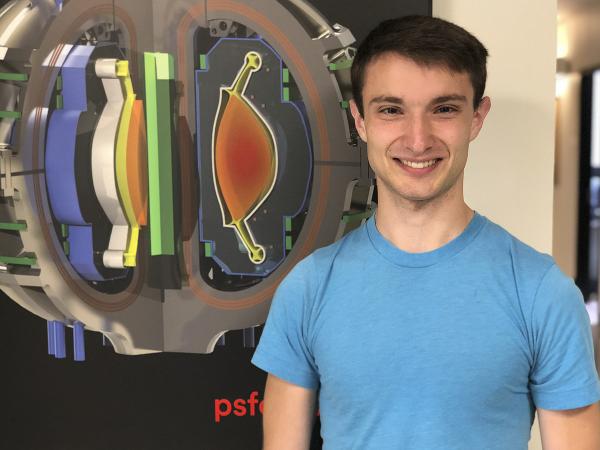
Alex Creely
Alex Creely
Commonwealth Fusion Systems
Friday, March 6, 2020
3:00pm
NW17-218
Abstract: The SPARC tokamak is designed to be a high-field (B0 = 12.2 T), compact (R_0 = 1.85 m, a = 0.57 m), DT tokamak with the goal of producing net energy gain (Q>2) from magnetic fusion for the first time. Currently in the conceptual design phase, SPARC will utilize new magnets based on rare-earth barium copper oxide (REBCO) high temperature superconductors (HTS), continuing the high-field path of the Alcator series of tokamaks. The goal of Q>2 is achievable with conservative physics assumptions (H = 0.7), and with the nominal assumption of H = 1, SPARC is projected to produce DT plasmas with Q = 11. SPARC will therefore constitute a unique platform for alpha particle and burning plasma physics research in a novel parameter space, with high density (n_e,0 = 4 10^20 m^-3), high temperature (<T_e> = 7 keV), and high field in a compact device. This unique operating space means that while SPARC shares some of the same plasma physics concerns as other burning plasma devices, it is further from some limits and closer to others. This talk introduces the SPARC device, describes the basis for the present performance projections, and summarizes some of the physics modeling work that are currently in progress.
Bio: Alex Creely is a scientist at Commonwealth Fusion Systems (CFS), working on the physics and engineering design of the world's first net-energy fusion device, the SPARC tokamak. He completed his PhD in Applied Plasma Physics in February 2019, working at the MIT Plasma Science and Fusion Center (PSFC). His PhD thesis topic was the measurement and simulation of turbulence in tokamak plasmas, with the ultimate goal of developing simulations that can accurately predict the performance of future fusion devices. He has worked with the Alcator C-Mod tokamak at MIT, the ASDEX Upgrad tokamak at the Max Planck Institute for Plasma Physics in Germany, and the Large Helical Device at the National Institute for Fusion Science in Japan.